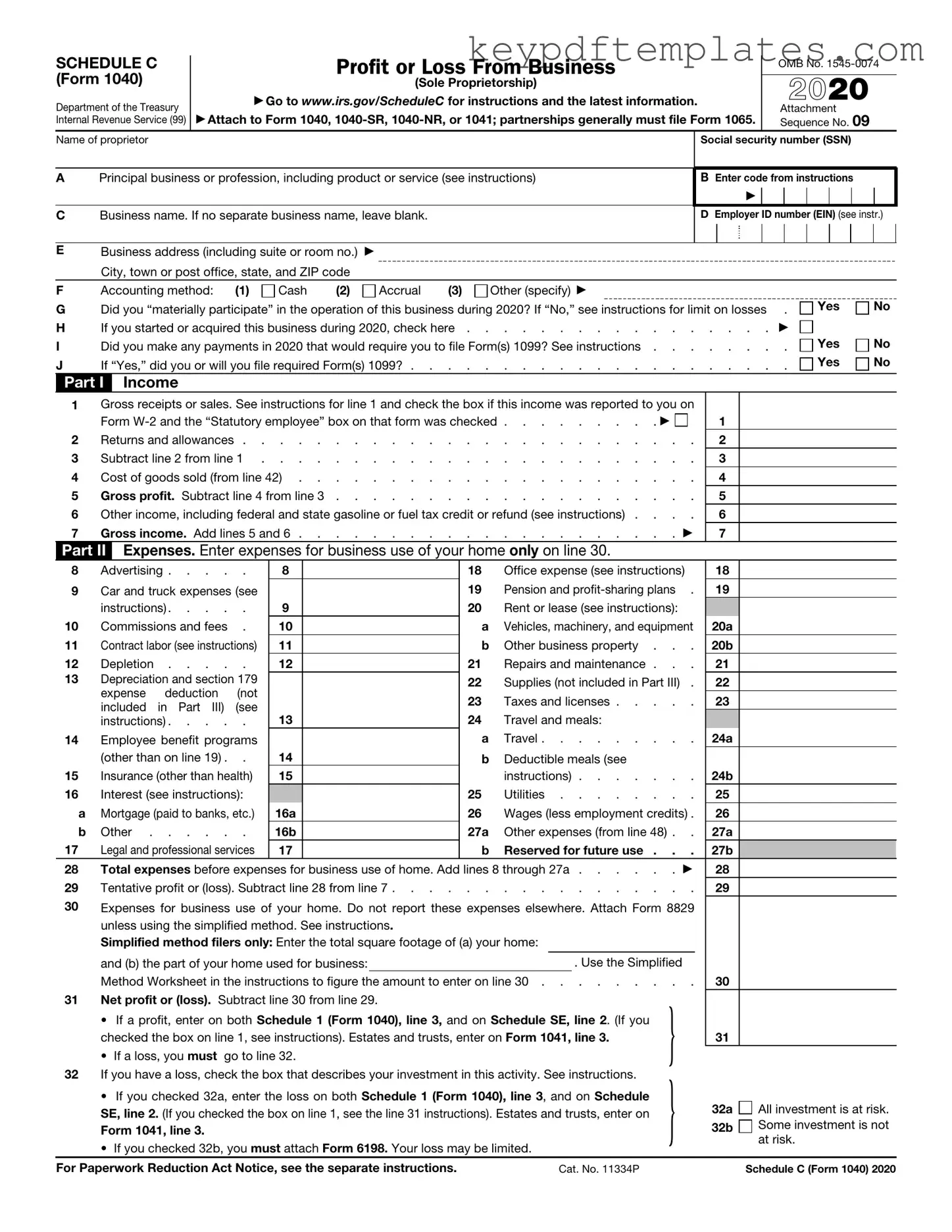Many individuals have misconceptions about the IRS Schedule C (Form 1040), which is used by sole proprietors to report income or loss from their business. Understanding these misconceptions can help you navigate your tax obligations more effectively.
- Misconception 1: Schedule C is only for businesses with employees.
This is incorrect. Schedule C is primarily for sole proprietors, regardless of whether they have employees or not. If you operate a business as a single owner, you need to file this form to report your income and expenses.
- Misconception 2: You cannot deduct business expenses if you operate from home.
Many believe that home-based businesses cannot claim expenses. In reality, you can deduct certain expenses related to your home office, such as utilities and internet costs, as long as they are directly tied to your business operations.
- Misconception 3: All income must be reported on Schedule C.
While most business income goes on Schedule C, some income might be reported elsewhere. For example, if you receive 1099 forms for freelance work, that income should still be reported on Schedule C, but certain types of income may have different reporting requirements.
- Misconception 4: You can only deduct expenses that have receipts.
This is not entirely true. While having receipts is ideal for substantiating your expenses, you can still claim deductions based on reasonable estimates for certain expenses, such as mileage or some home office costs, as long as you can justify them.
- Misconception 5: Filing Schedule C is optional for small businesses.
This misconception can lead to serious consequences. If you are operating a business and earning income, you are required to file Schedule C. Failing to do so can result in penalties and interest from the IRS.
- Misconception 6: You cannot file Schedule C if your business is not profitable.
Even if your business incurs a loss, you still need to file Schedule C. Reporting a loss can provide tax benefits, such as offsetting other income, which may lower your overall tax liability.
